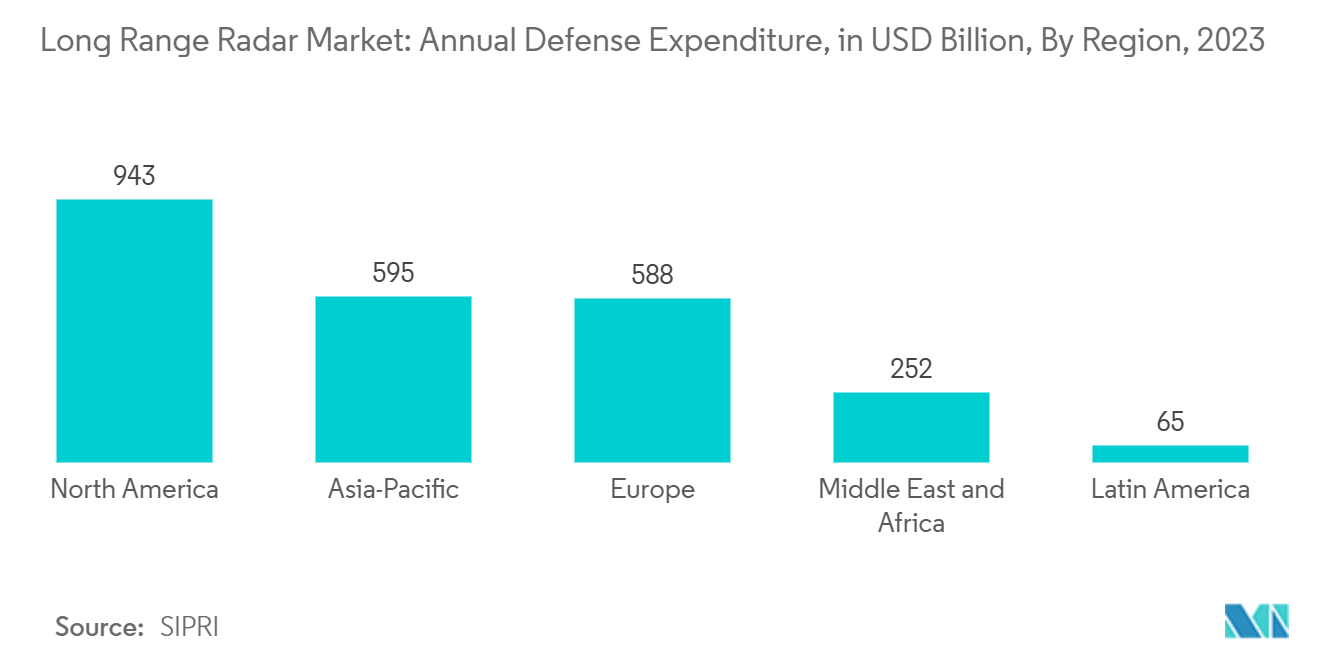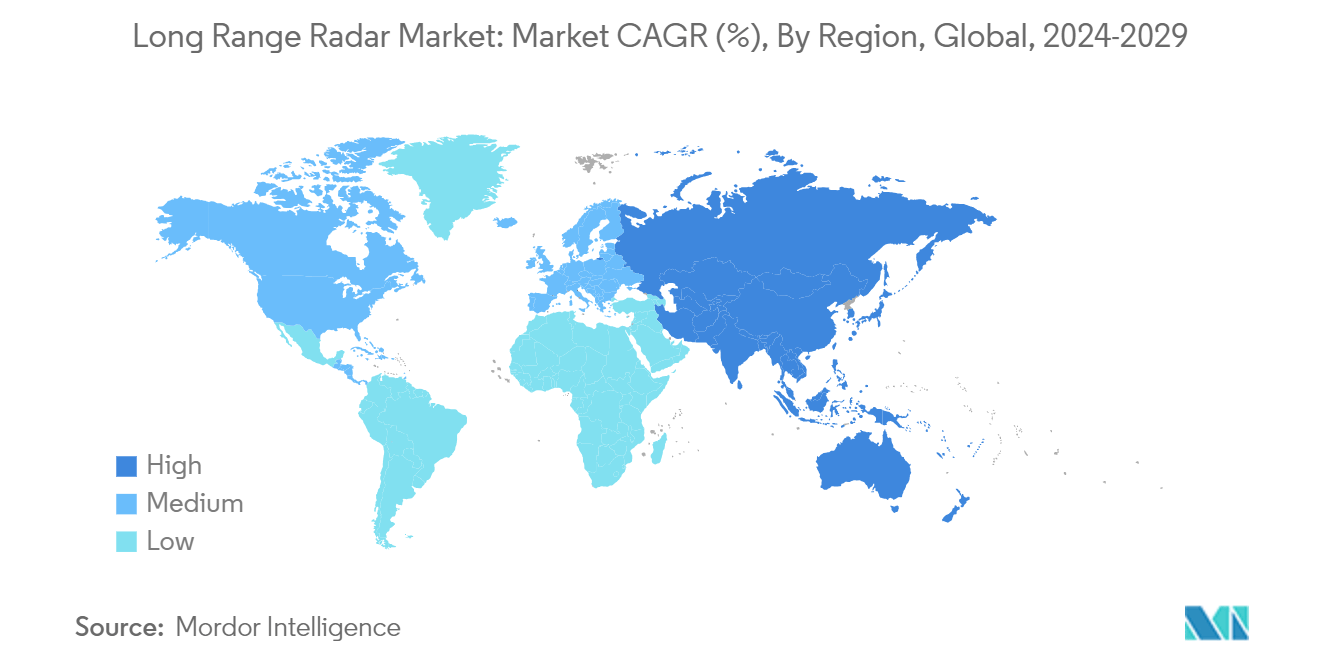Market Trends of Long Range Radar Industry
Naval Radars to Exhibit the Highest Growth Rate
Major military spenders, including NATO nations in the US and Europe, heavily invest in developing new naval vessels. Initiatives like the European Corvette program and the FFG(X) frigate development are poised to boost the market for sea-based long-range radars. The US Navy aims to add 46 new vessels to its fleet by 2023 and plans to introduce 20 next-generation FFG(X) frigates by 2030. These additions are set to enhance the long-range radar market, especially since there's an intention to equip these vessels with cutting-edge C4ISR and battle management systems.
The US armed forces are focusing on both next-generation and current-generation platforms. For example, in September 2023, the US Navy granted a USD 46 million cost-plus-fixed-fee contract to Lockheed Martin Corporation's Rotary and Mission Systems for an advanced digitally expanded, ultra-high frequency, multiple input, multiple output radar.
In a parallel move, the British Ministry of Defense (MOD), in June 2023, awarded a decade-long contract valued at GBP 270 million (USD 339 million) to BAE Systems PLC. This contract aims to bolster the Royal Navy’s three primary radar systems: Artisan, Sampson, and Long-Range Radar (LRR). This new support contract consolidates several older agreements, ensuring better value and advancing future technological advancements. Under this agreement, BAE Systems is tasked with maintaining and upgrading the existing radar systems. This includes rolling out technological enhancements to the currently operational systems and those being integrated into the Royal Navy’s upcoming Type 26 frigates.
Furthermore, the MOD and BAE Systems are co-investing an additional GBP 50 million (USD 62 million) to pioneer the next generation of radar technology. This advancement is crucial for the Royal Navy to counter emerging threats like ballistic missiles and drones. Given these advancements, a significant surge in demand for naval long-range radars is anticipated during the forecast period.

Asia-Pacific to Witness Highest Growth During the Forecast Period
Major military powers, including India, China, Australia, South Korea, and Japan, are in the Asia-Pacific region and contribute significantly to global military spending. Rising border conflicts, airspace violations, tensions in the South China Sea and Pacific Ocean, and advancements like hypersonic ballistic missiles drive the demand for sophisticated long-range surveillance and tracking systems in the region.
China is heavily investing in modernizing its navy and air force. Notably, China is enhancing its radar technology by developing pulsed meter wave long-range networked radars, which are crucial for targeting stealth aircraft like the F-35. Furthermore, China has provided its JY-27 phased array three-dimensional long-range radar to Pakistan's Type 054A frigates, also manufactured in China.
Countries in the Asia-Pacific, including South Korea, Japan, and Australia, have integrated fifth-generation F-35 aircraft into their defense fleets. Japan is even planning to produce these aircraft domestically. Such moves are anticipated to boost the demand for airborne long-range radar systems on the region's F-35s, further fueling the growth of the long-range radar market in the Asia-Pacific.


